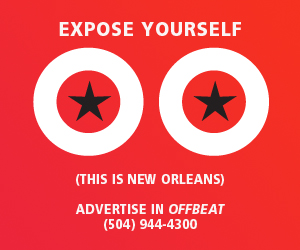George Porter has been quoted claiming that his live audiences are the same average age now as they were 20 years ago. As a frequent member of George’s cult-like gatherings, I can vouch that it is mainly college kids and twenty-somethings getting into George’s brand of funk. It is free, feel-good music to get a swerve going to. With his bass in the forefront and turned up loud, his Runnin’ Pardners a bit muted, yet still with him on every twist, George blows through well-loved tunes like “Sneakin’ Sally” and “The Dragon.” The “funk” and the “go nuts” really take place in the clubs, not on this record.
From the first couple of supporting chords, the seasoned Porter fan starts to scrunch up his nose and furrow his brow with confusion. Things don’t really get going until the third track, “Let’s Get It,” a semi-extended rhythm-based tune where you can really see that George has control despite the intermittent screaming of synthesizers.
Alas, things slow down to the point of heartache with “How Long?,” a love ballad appropriately cheesified with a smooth bell-like keyboard setting, and sloppy, crooning vocals. Mainstream America might even go for this one! There are other poppy tracks like “High Above,” which, with police radio sound effects delivering social commentary over a dark Twilight Zone-esque whirling melody, could have been the theme song for a 1980s television cop show.
Despite all this, there are a few tracks where we hear snatches of the sound we’ve come to expect from this group of master funksters. Most notable are “Up Late at Night” and “By Athenish,” both instrumental tracks written by Porter alone. The covers are acceptable, but not special, like a smoothed-out version of the Meters’ “Yeah You’re Right,” retitled, “Yes, Thou Art Correct.” (Does the new title imply a “proper” version of one of the most perfectly funky tunes ever written?) Curtis Mayfield’s “Check out your Mind” moves right along, but I’ve seen these guys do it better live a hundred times over.
It seems that, in the studio, the arranging was overdone to the point where it negates the basic elements of funk omnipresent in the material. Funk, in order to be funk, must be primarily rhythm-based, and secondarily bass-driven. In many instances, this record overhauls that natural, stripped down style that all the kids “go nuts” over with too much squealing synthesizer drowning out the very funkiness of it. What we’re left with is watered-down elevator funk that made my friends ask when I’d gotten into easy listening. Now, if George and his band had meant to go in a new stylistic direction (God forbid), that would be one thing, but judging from the title of the project, one would have to conclude that they messed with success and tipped the scales of the tried and true formula for the funk.




